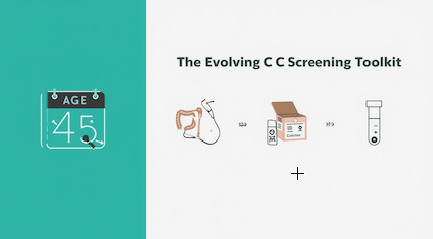Unlocking Neurolinguistic Programming for Treatment of PTSD, Phobia, and Fear. (Layman's Terms)
- OliveHealth

- Apr 5
- 5 min read
Updated: Jun 9
by Edwin Fuentes M.D. April 5, 2025 4PM

Abstract
"Phobias (like extreme fear of spiders or heights) and PTSD (after a scary or traumatic event) are common and can really mess with people's lives all over the world. This article looks at how a therapy called Neuro-Linguistic Programming, or NLP, might help treat these problems. Many people who use NLP say it works well, but there haven't been a lot of strong scientific studies to prove it. This article reviews what research does exist from the UK and the US, and it suggests that NLP might be a quick and effective way to help people get better from phobias."
Introduction
"Back in the 1970s, two guys in California, John Grinder and Richard Bandler, started something called Neuro-Linguistic Programming, or NLP. Basically, they were trying to figure out what made really good therapists so effective.
One of them, Bandler, listened to tapes of a famous therapist named Fritz Perls. He noticed that Perls used certain ways of talking that seemed to really help people. Bandler teamed up with Grinder, who knew a lot about language, and they also looked at how other successful therapists like Virginia Satir and Milton Erickson worked. They wanted to find the "magic formula" these therapists used, so they could teach it to others. They wrote a book about it called "The Structure of Magic."
From there, NLP grew into a way to understand how we think and communicate, and how we can change those patterns to be better. The name itself breaks it down: "Neuro" means it's about how our brains work, "Linguistic" means it's about how we use language, and "Programming" means we can change our habits and thoughts.
NLP became really popular, with lots of people learning it all over the world. It's used in many areas, like sales, business, and even sports. But it's also used in medicine to help doctors connect with patients and to treat problems like stomach issues, addiction, weight problems, and ongoing pain. Because it came from studying therapists, it's also used to treat mental health problems, like anxiety, depression, and especially phobias. Some people even say NLP can get rid of a phobia in just an hour."
Phobias
"A phobia is basically a really strong, unreasonable fear of something specific. It could be an object, like spiders, or a situation, like being in a small, closed space. When someone has a phobia, they get super anxious or scared when they're around that thing, and they'll often go out of their way to avoid it.
Doctors who study mental health have a book that helps them diagnose these kinds of problems, and it describes phobias as 'unreasonable fear or anxiety.' We can break down phobias into different kinds:
* Specific phobias: These are fears of particular things, like animals (like a fear of spiders, called arachnophobia), or places in nature (like a fear of water, called hydrophobia), or certain situations (like a fear of being in tight spaces, called claustrophobia)."
NLP and 'Anchoring'
"Think of how dogs learn to drool when they hear a bell because they associate it with food—that's basically what happens with phobias, but with fear. It's called 'classical conditioning.'
Basically, sometimes, just one really scary experience with something can create a strong link in your brain between that thing and fear. So, let's say you had a terrifying experience with a dog when you were little. Now, even just seeing a picture of a dog can make you feel scared. Your brain has 'anchored' that fear to the image of a dog.
NLP uses this idea of 'anchoring' to understand how phobias get started. Your brain quickly learns to link a trigger (like a spider) with a strong fear response, and after that, even just thinking about it can set off that fear."
NLP Phobia Cure
"When you have a really intense phobia from a scary event, just thinking about it can make your body react like you're actually there. Your heart might race, you might sweat, you might feel sick. NLP says this happens because your brain has mixed up two different senses—usually sight and feeling. It's like your brain has created a strong, automatic connection.
So, if you have a fear of spiders because you had a bad experience, just seeing a picture in your mind can make you feel that fear physically. That mix-up of seeing and feeling is called a 'synesthesia' in NLP.
Most of the time, it's about seeing something scary in your mind and then feeling the fear in your body. But sometimes, it can be about hearing something scary and then feeling the fear. For example, a specific sound might bring back the fear feeling."
Evidence in Research
"A lot of people who use NLP say it works really well for phobias, and they have stories to back it up. But, when it comes to hard science and solid research studies, there's not a whole lot out there.
However, some researchers have looked into whether NLP actually works for phobias. For example, a researcher named Furman did a study comparing a few different short-term therapies for PTSD, which is similar to phobias. One of those therapies was the NLP technique called the 'visual/kinesthetic dissociation' (V/KD) phobia cure. Basically, they looked at whether this NLP method helped people get over their trauma.
Further Applications
"It turns out that the NLP technique used for phobias, the V/KD thing, might also help with long-lasting pain. You know, the kind of pain that just won't go away.
Scientists have found that when people with chronic pain are also scared or anxious about their pain, it actually makes the pain worse. So, if you can help them deal with that fear, their pain often gets better.
There are even stories of people with long-term pain who've used this NLP method and found that it helped them feel less pain."
Reframing Phobias
"Besides the V/KD technique, NLP has other ways to help with phobias. One of these is called 'reframing.'
Instead of just trying to get rid of the fear altogether, reframing tries to change how you think about it. Basically, it helps you see the fear in a different way.
Two people who work with NLP, Bodenhamer and Hall, say that fear isn't always a bad thing. It can actually protect you. So, instead of erasing the fear, they suggest changing how you understand it. They want you to find the good side of the fear, or the reason it might be there, and then change your thinking about it. For example, fear of heights is bad when you're on a ladder, but very good when you're on the edge of a cliff."
Resistance
"Sometimes, when people try to get rid of their phobias using the V/KD technique, they might resist it. They might feel uncomfortable or not believe it will work. That's where 'reframing' can be really helpful.
Basically, if someone is fighting against the therapy, changing how they think about their fear can be a way to work with that resistance, instead of fighting against it.
There's also something called the 'Milton Model,' which was created by a famous hypnotherapist named Milton Erickson. This model is all about understanding that people's minds can be a little skeptical, especially when it comes to things like NLP or hypnosis. It's like, your brain might say, 'Wait a minute, this sounds a little weird.' The Milton Model helps therapists work around that skepticism by using language in a way that the person's mind is more likely to accept."
ELF




Comments